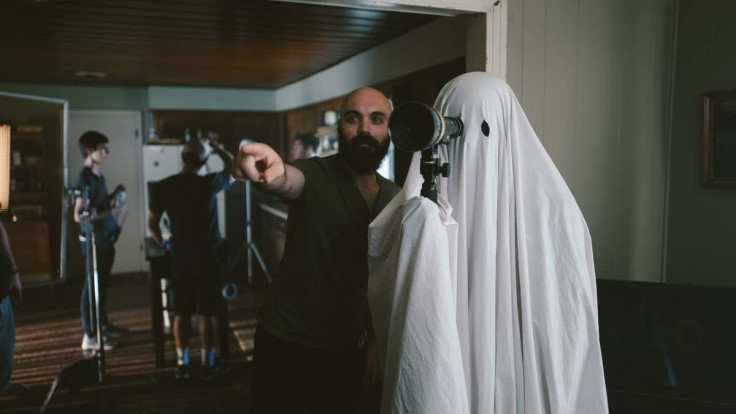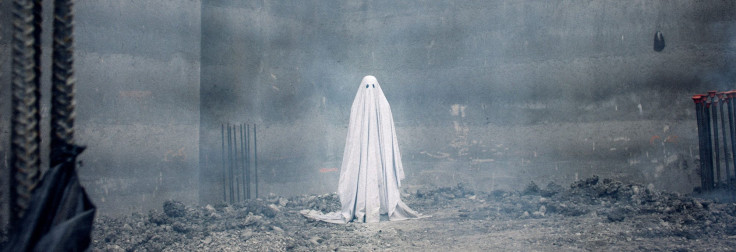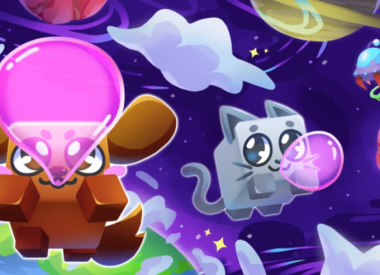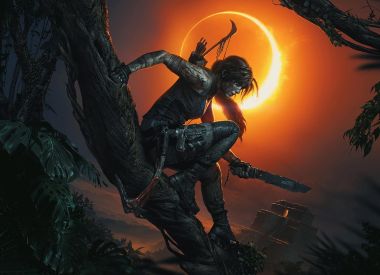A Ghost Story is a haunted house movie that inverts the usual genre formulation. Despite all the dead people, most haunted house movies aren’t about death, they’re about a flight from death. Death is opposed. And if there are survivors, death has been defeated (for now). In Poltergeist and The Conjuring — both movies director David Lowery described as “on our minds a lot” while creating A Ghost Story — a family escapes a haunted house. Attacked by the dead, they fight for life. Death and the dead are enemies and forces opposed to life. But what if that detachment from the living grants the dead a perspective on life worth learning? With A Ghost Story, Lowery embraces the dead, not the living, following a haunted house’s ghost over many decades and upending haunted house movie history in the process.
“We wanted this movie to be from the ghost’s point of view,” Lowery told Player.One. “Once you tell this story from the ghost’s point of view, it ceases to be scary and just becomes rather tragic.”
PSA: #AGhostStory is not a horror movie. It's not a 'post-horror' movie. It's a cosmic love story about TIME and the enormity our existence.
— A24 (@A24) July 6, 2017
That single change, swapping the haunted house narrative’s protagonist and antagonist, also radically re-centers the viewer. Instead of worrying for the fate of living people, A Ghost Story asks us to situate ourselves in death and imagine the world without us in it. “ The concept of ghosts is an incredible tool for exploring our own fears of what happens next and our own ideas of empathy and even exploring our own concepts of ego,” Lowery said. “The idea of being around after you’re gone, looking at someone grieving for you, is a tremendous display of human ego.”
Though A Ghost Story plays in a pop culture space, existing alongside movies like Insidious and The Amityville Horror, its contemplative posture reaches back to centuries-old artistic and philosophical traditions. It follows from art that asks we contemplate death to embrace the fragility and transience of life — like the medieval memento mori — and the mentality of the Stoic Seneca, who wrote:
“What, have you only at this moment learned that death is hanging over your head, at this moment exile, at this moment grief? You were born to these perils. Let us think of everything that can happen as something which will happen.”
For Lowery, the supernatural is the perfect environment for that exploration. “Setting aside one’s ego as one considers one’s place in the universe is a very healthy thing to do, but it’s challenging. And using the language of the supernatural to get through that process — I find that, personally, a very helpful thing to do.”
The ghost, played by Casey Affleck under a sheet with holes cut out for the eyes (the actual costume is a little more complicated than it appears), spends most of his time watching life go by. No longer a participant, reduced to an observer, there’s nothing he can do as everything that was familiar and beloved falls away. Brief flare-ups of anger and frustration pop lightbulbs, but his powers extend no further than a few broken dishes. His limited power may be terrifying for the new residents of the house (his wife has long since moved on), but only reveals the ghost’s increasing detachment from what he once had.
To settle us into a perspective that asks us to look in on life from the outside, A Ghost Story employs the imagery and attitudes of genre film, horror in particular, to “provide a sort of safety net for the audience,” Lowery said. “Everyone sort of understands how ghosts work in movies, because you’ve seen it a million times. And we could utilize that familiarity to be a little more expeditious with our storytelling.”
One of the most striking examples of this comes early in A Ghost Story. After dying in a car crash, Affleck’s character sits bolt upright in the morgue — his death shroud becoming his ghostly “body.” Wandering through a hallway, the ghost is confronted with a supernatural doorway opening in a wall, the gate to some sort of afterlife. Though the doorway itself is blazing white, the ghost reflects back neon colors reminiscent of Dario Argento’s radiant palette.
“The description in the script was ‘like something you would see in Raiders of the Lost Ark or Poltergeist or some other 1980s ILM film.’ We did it as close as possible to the way they did in those movies. We shot it in miniature and composited it in,” Lowery says. “We wanted it to feel like a very old-fashioned genre effect that audiences would recognize as such. It was meant to evoke certain feelings. The score in that sequence is meant to feel vaguely like a John Carpenter score.”
“The idea was to take something that was very silly, that could employ things like a glowing portal from a 1980s movie, and yet still achieve a tone of elegy or grandeur,” Lowery said. “The challenge in the movie — and I didn’t make it just because of the challenge — but the challenge implicit in it was to take these conceits and find the gravitas behind them and let that gravitas sort of take over, without ever taking the sheet off or reaching for something that was a little more visually resplendent. We wanted to keep it very technical, very nuts-and-bolts, very handmade and yet through those handmade processes achieve something that felt profound.”
Using familiar genre tropes as a lingua franca gives A Ghost Story the common ground to explore the ineffable or unknown. “ I believe there's mystery in the world that we don't have a grasp on and we can't define and maybe some day we will. In the same way that we used to not be able to define gravity,” Lowery says. “I like the idea of taking a haunted house movie like Poltergeist and viewing it through these existential crises I think we all go through as human beings.”

For Lowery, an atheist and materialist raised in religious household, the supernatural isn’t the mystery itself, but a metaphorical space in which we can evaluate and map out our life’s meaning in a universe that’s unlikely to have an intrinsic meaning of its own. “Outside of that physical mystery all around us, I don’t really believe in much more than that,” Lowery says. “We were raised with a sense that everything we do in life is meant to prepare us for moving on to heaven and the afterlife and then our place in God's kingdom. And this life here is just a stepping-stone. And when you think of things in that perspective, it's very easy to both just let your ego continue because you have faith it will keep going and also to assume everything you're doing has a grander sense of purpose.”
Addressed in the explicitly fictional terms of the cinematic supernatural, A Ghost Story denudes its afterlife of religious or philosophical affiliation. “It gives me room to wonder,” Lowery said. The journey becomes deeply personal, both for the ghosts in the movie — a ghost haunting the house next door might as well be communicating across an impassable gulf — and the viewer, who joins the dead man in his long vigil. Observing life, but without life of its own, A Ghost Story asks us to find meaning in the world in the context of its impermanence and without the assumption of our ongoing consciousness.
“I turned 33, 34 and realized that I was making movies that I would not be around to see mature. I'm not going to be watching from the afterlife, from my point of view, watching people watching my movies in the future. So I start wondering 'what's the point of making them then? Is there a point making them? If I'm not going to be around to witness that, what is the point of investing so much energy in them now?’” Lowery says. “It wasn’t me being nihilistic. I wasn’t saying there wasn’t a reason, but I was realizing I need to redefine what that reason was within the very finite terms of my own mortality.”
“You have to set aside nihilism, or embrace it. I choose to set aside because it makes things work better for me,” Lowery says. “Woody Allen has always said that he doesn't care what happens to his movies when he dies. They could all be burned at a massive conflagration at his funeral and it wouldn't matter to him. And that always troubled me, but I realized that that's actually a point of view that's healthy to accept, because that's likely true: it doesn't matter. Even if there is an afterlife, the concerns of your earthly output probably don't matter that much to you when you move on to the next plane.”
At the end of The Haunting, Robert Wise’s 1963 adaptation of Shirley Jackson’s momentous The Haunting of Hill House, a young woman sensitive to spirits is overcome, dying in a car crash and presumably joining the congregation of spirits haunting the house. And then the credits roll. What she experiences on the other side is left to our imagination. A Ghost Story, meanwhile, embraces what The Haunting and other haunted house movies reject, turning to the mysteries of death for answers about life.



















